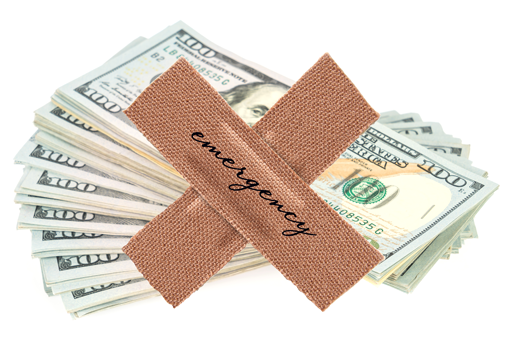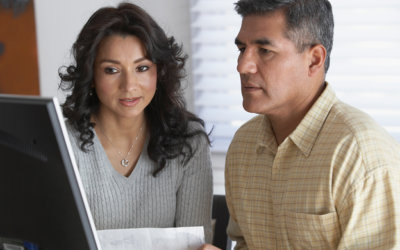Building an Emergency Fund
Have you ever jumped into the shower, but the water was ICE COLD?! Not a good feeling.
Now picture if you will, you head to the basement only to find there’s water all over the floor; the water heater has taken it’s last breath. ARRRRGGGGH! For a number of families, such an occurrence might mean a budget disaster is on the horizon. However, there’s a way to ensure this, or any other “unexpected expense,” does not cause unnecessary stress in your life. Care to take a guess? Yep, ding, ding, ding, ding…the answer: an emergency fund.
You do know an “financial” emergency is merely an unplanned expense, right? Understanding there will always be something for which you can’t prepare, it’s best to always be prepared, wouldn’t you agree? Well, at least that’s the scout slogan many a youth learned when they were young. But how can one be prepared for a screw in the tire, a trip to the pet hospital with Mocha, or anything for which you could not budget? One of the most prudent things a budgeting family can do is prepare for an emergency by creating an emergency or “rainy day” fund. The idea is to create a fund on which you can rely, as opposed to a dreaded credit card or loan, each of which will bring on it’s own set of issues and exacerbate the problem.
Here are a few tips on how to build an emergency that will keep your heartbeat at a steady pace should an emergency arise.
- Identify how much you wish to save. Starting off with $1,000 is a good initial goal. That’s right, ONE THOUSAND. It may seem like a lot, but wouldn’t you feel more comfortable saving it over a short period of time, than having to come up with this amount in say, an hour? The key is to save. Ignore interest rate. Ignore investment options. Just save. Once you’ve reached the emergency fund goal, any other savings should go into a separate account. We’re working on creating a new habit here.
- Place the money out of your reach. Most likely in a separate savings account. Doing so will ensure you resist the urges to splurge when you walk past the newest designer purse or shiny new gadget. Remember, we’re working on creating a new habit.
- Determine how to fund your emergency fund. Will you use budgeted money from your weekly, bi-weekly or monthly income? Will you use your tax refund? How about a part-time job? Whatever the source decide, and have the money direct deposited into the account. The key here is to remember, we’re working on creating a new habit.
- Don’t touch, with the exception of an emergency. What’s an emergency you ask? A good way to answer the question is to eliminate what’s not an emergency. you know things like holidays, birthdays, anniversaries, “a great deal,” or anything for which you can plan. Emergencies are ONLY for the unexpected. Remember – yep, you guessed it – we’re working on creating a new habit here.
The benefit of your emergency fund is you will now have reserve funds on which you can depend should a “financial storm” head your way.



